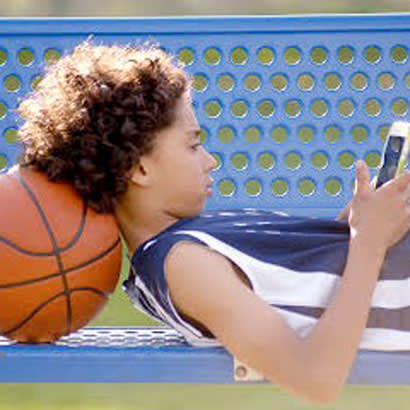
…quality education plays a decisive role in development. [We] call upon all States to promote digital literacy and to facilitate access to information on the Internet…
— Resolution 32/13 from The Human Rights Council of the United Nations
In America, we’ve come to expect certain things. Clean water from faucets, paved roads and lights after dark. Perhaps you think of internet access in the same vein, that it’s there whenever you turn on your smartphone or laptop. These days, we’re all virtually tethered to electronic devices: 95 percent of Americans* own a cellphone, the majority of which are the smart variety. Wi-Fi is no longer considered an amenity, but rather a public utility, like electricity, highways and running water. If you don’t believe it, just ask any millennial or the parent of a young child.
For most of the inhabitants of our planet, access to the internet, much like access to clean water, safe roads and reliable electricity, isn’t a given. So much so that, in 2016, The Human Rights Council of the United Nations passed a resolution, declaring connectivity to the internet to be a basic human right. They cite the relationship between connectivity and education, and the degree to which education can lift people out of poverty. More than 70 nations endorsed this resolution. Several countries, including Russia, China, Saudi Arabia and South Africa, opposed the measure.
Access for Everyone?
Here in the United States, for millennials between the ages of 18 and 29, smartphone ownership is almost 95 percent.* Not surprisingly, low-income or older adults are less likely to own a smartphone. The same holds true if you’re Hispanic or African-American. Home internet access follows a similar pattern.
Since public parks typically are free and easily accessible, they represent a great means of bridging the digital divide. However, once the costs of staffing, maintenance, infrastructure and visitor programs are factored in, most park departments don’t have extra dollars in their budget to fund connectivity. This is where public/private partnerships can really make a difference.
When New York State Parks decided to take a leadership role in offering free Wi-Fi in parks, it was a creative partnership that made the service, Oh, Ranger! Wi-Fi™, possible. State Parks Commissioner Rose Harvey explains, “We’re grateful for our continued partnership with Toyota and American Park Network, whose generous support has allowed us to enhance our parks by adding this much sought-after service.” This year, as the program expands, free public Wi-Fi will be available in parks that account for nearly 40 percent of the system’s total visitation!
Wi-Fi at Roberto Clemente State Park
One great example is Roberto Clemente State Park, the first and oldest state park in New York City, which welcomes 1.3 million visitors each year. It’s located on the Harlem River in the Morris Heights section of the Bronx, one of the city’s lowest income neighborhoods. Two public schools, PS 274 (elementary) and PS 229 (middle school), stand adjacent to the park and, because of limited resources, the schools use the park as an extension of their facilities: for recess, gym classes and afterschool programs.
The park, which is undergoing a major renovation following the devastating effects of Hurricane Sandy, is truly a sanctuary for the community. When completed, it will feature a beautiful new esplanade along the river, with a shared pedestrian/bicycle pathway, river overlook, boat launch, performance area and a scenic intertidal area that will absorb heavy rainfall and provide a natural habitat for plant and animal life. These improvements will provide safe access to the Harlem River (which was historically walled off) and spur unique environmental education opportunities.
Safety and educational opportunities are key benefits for families in the neighborhood. Jennifer Zeno, a single mom who regularly brings her three girls — Christin, Kalyn and Alexandria — to the park, says, “The park is a place to escape, where children can play safely!” She thinks the addition of free Wi-Fi is “amazing!” and quickly adds, “The internet is a luxury. It’s too expensive for most people.”
Statistics on access to the internet support Zeno’s contention. While the majority of Americans have smartphones, internet access at home isn’t ubiquitous. In fact, a growing share of Americans now use smartphones as their primary means of online access, and many have had to cancel or periodically shut off their service because the cost is a financial hardship. So, in a low-income neighborhood, like Morris Heights, the internet really is a luxury.
These sentiments were echoed by Jordan Colomer, the gym teacher for Zeno’s daughter, Christin. Colomer brings her classes to the park daily. “I don’t know what we’d do without the park,” she says. “Internet access in the school is iffy and most of the kids don’t have it at home. Having internet access at Roberto Clemente is great! It means children can read e-books and study. If they see something interesting in nature, they can take and share pictures and then look it up. It’s instant learning in the outdoors!”
In addition to providing free connectivity to help attract and educate millions of visitors, public Wi-Fi is a digital information portal that can identify park visitation patterns, generate awareness of upcoming events, serve as an operations management tool and promote park nonprofit partners.
So, while the debate continues about whether access to the internet is a basic human right, it will certainly make a difference to families visiting Roberto Clemente State Park, the hub of a Bronx community, as well as a growing list of parks nationwide.
*Statistics on internet access and cellphone ownership from Pew Research Center.
Mark Saferstein is the Publisher and Editor-in-Chief for American Park Network.

